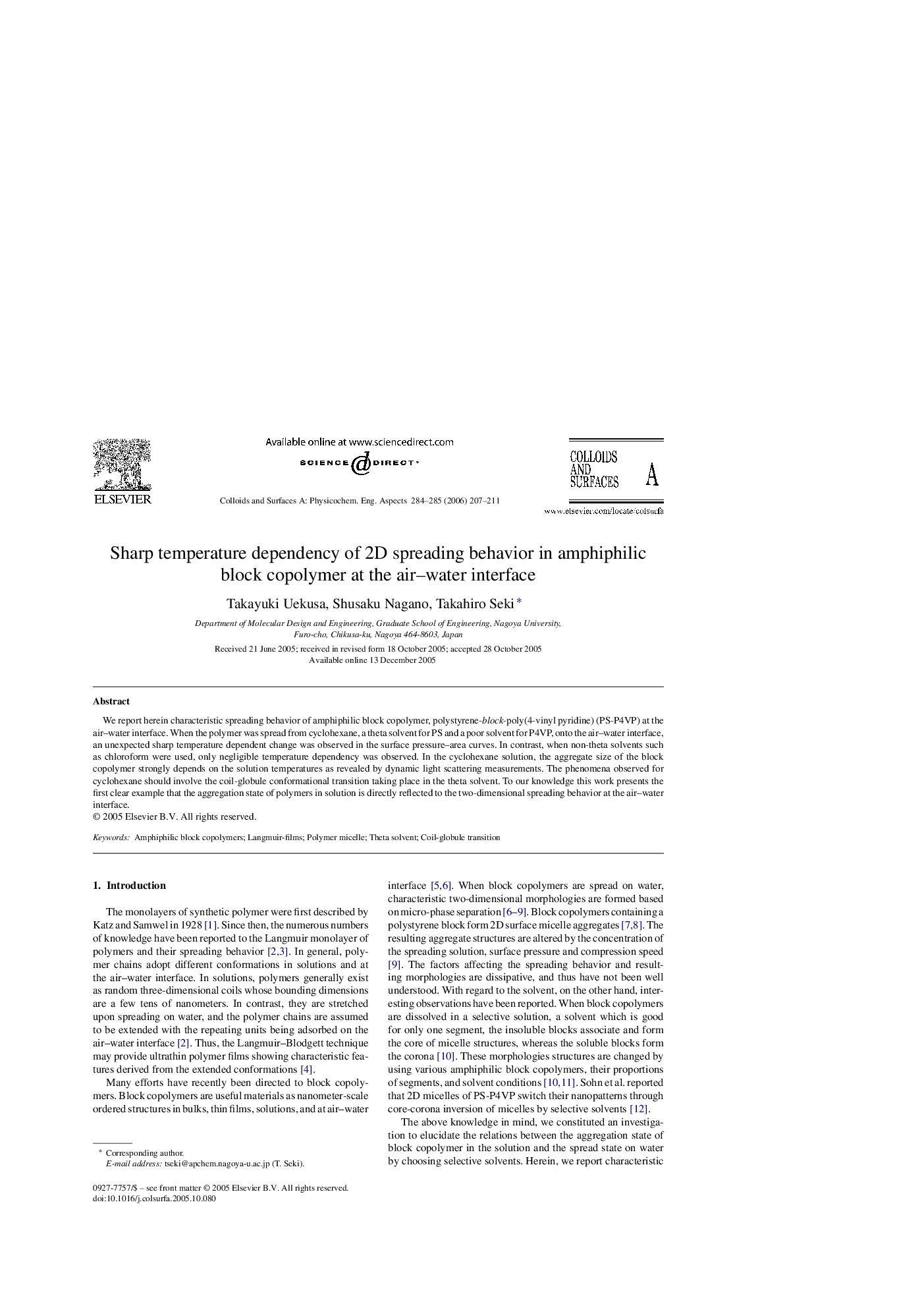| Article ID | Journal | Published Year | Pages | File Type |
|---|---|---|---|---|
| 598242 | Colloids and Surfaces A: Physicochemical and Engineering Aspects | 2006 | 5 Pages |
We report herein characteristic spreading behavior of amphiphilic block copolymer, polystyrene-block-poly(4-vinyl pyridine) (PS-P4VP) at the air–water interface. When the polymer was spread from cyclohexane, a theta solvent for PS and a poor solvent for P4VP, onto the air–water interface, an unexpected sharp temperature dependent change was observed in the surface pressure–area curves. In contrast, when non-theta solvents such as chloroform were used, only negligible temperature dependency was observed. In the cyclohexane solution, the aggregate size of the block copolymer strongly depends on the solution temperatures as revealed by dynamic light scattering measurements. The phenomena observed for cyclohexane should involve the coil-globule conformational transition taking place in the theta solvent. To our knowledge this work presents the first clear example that the aggregation state of polymers in solution is directly reflected to the two-dimensional spreading behavior at the air–water interface.
